
The conference program can be found here.
Industrial Keynote
Sarah Gregory - It Depends: Heuristics for Common Enough Requirements Practice
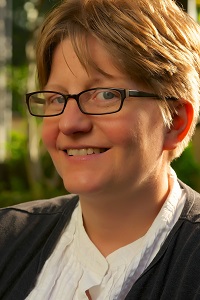 | Sarah C. Gregory is a Senior Partner in the Intel Emergent Systems and Coaching team (IESC), Intel Corporation. As a Senior Methodologist in Requirements Engineering, Sarah develops and mentors Requirements Engineering subject matter experts across Intel worldwide, conducts training, and trains many course trainers. In fifteen years at Intel, she has extensively explored the human aspects of sociotechnical systems, primarily through the lens of requirements engineering. Her research interests reside in those boundary spaces, the marginal areas where cultures intersect and overlap with product development efforts. Sarah’s academic background includes graduate degrees in Law, Information Science, and Systematic Theology, and she is currently pursuing a doctorate in Social Theory in a joint program between the Graduate Theological Union and the University of California-Berkeley. |
Abstract:
In industrial practice, nearly all questions a practitioner or team might ask about Requirements Engineering – about methods, tools, techniques, or even the right level of detail or timing of one’s requirements work – can be answered quite simply: “It depends.” Often, a company or other entity will have made specific decisions to limit the range of possibilities: which tool to use, what models will be employed, or perhaps what development lifecycle will govern the project. When that practitioner or team must work with other teams and practitioners, or even jointly develop a system with external companies or researchers, some measure of commonality of practice will be required. The question, “How common is common enough?,” is implicitly invoked, if rarely explicitly explored. The range of “common enough” in any particular set of circumstances often depends on factors unrelated to Requirements practice itself. Through the use of a proposed set of heuristics, teams and practitioners can navigate various layers of project, system, and organizational complexity to arrive at a “common enough” solution.
Industry Talks
Gunnar Harde - Agility and Obligation
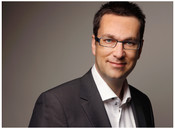 | Gunnar Harde is Scrum Product Owner and expert in agile management at the Group Quality Assurance of the Volkswagen Aktiengesellschaft. After studying physics in Germany and New Zealand, Gunnar Harde worked as software engineer, later as IT consultant and project manager for IT and business consultancies and research institutes. Since 2007 he is responsible for the development of several IT systems at Volkswagen. He shapes the cooperation between IT and business department strategically and methodically and designs innovative digital products for the Group Quality Assurance. |
Abstract:
Developing software is a complex task. Especially the interaction between client and contractor is very challenging because de facto the client cannot completely describe his requirements for the system to be developed due to the complexity. This must be considered when arranging the contract of the cooperation. Fixed price agreements require a precise description of requirements to achieve a high level of certainty for the pricing. Because it is impossible to define precisely all requirements in advance, this kind of agreement is often conflict-laden. The planning certainty for the client suggested by fixed price agreements is usually not given. Furthermore, the contractor is tempted by fixed prices to produce software lacking the necessary quality. Therefore, the sustainable maintenance and further development of the software is endangered. Service agreements can instead provide much better support for the effective development of high-quality software. However, the client must make sure that the collaboration with the contractor is close and transparent. And he has to make sure that he is not trapped in a long-term obligation in case a trustful cooperation could not be established.
Ali Shahrokni - Requirement Traceability in Practice: How to turn the challenge into an opportunity (Slides)
 | Ali Shahrokni is currently working as business analyst and application engineer at Systemite in Gothenburg Sweden. His job is to analyze the customers’ data flows and processes and create solutions to enable them to manage their data more efficiently on an organizational level. Ali is also responsible for the safety solutions, such as ISO 26262, provided by Systemite. Ali has a Ph.D. degree from Chalmers University of Technology with focus on how to specify and test software quality, specifically robustness. |
Abstract:
In many domains, such as the automotive domain, technology is expanding at a rapid pace. The traditional reductionist approach has considered disciplines in isolation with few interfaces and synchronization points between the disciplines such as physics, mechanics, electronics, hardware, and software. This type of thinking within and between domains has led to silo-like processes and methods and as a result fragmented organizations, processes, and data. The benefit of this type of thinking is the efficiency within each silo, and one of the down sides is sub-optimization inside silos, especially when there is not enough feedback across the discipline borders. With the introduction of more advanced and cross-disciplinary products and with higher demand on optimization of products, the disadvantages of fragmented data management has become more clear. This development has made the need for integrated and traceable data more clear. Therefore, there are many initiatives in the area of data and requirements traceability. In this talk, Systemite will present their view on data and requirements traceability. The focus will be not on how to create traceability, rather on how the traceability can be used to increase organizations' efficiency. Systemite has more than 15 years of experience in the area of integrated data management, mainly in the automotive industry.
Luciana Provenzano - Writing software requirements for railway safety-critical systems
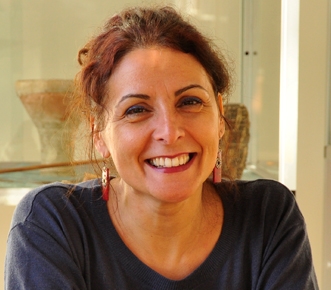 | Luciana Provenzano is Requirements Manager for the Train Control and Management System in the Chief Technology Office at Bombardier Transportation, Sweden. Her current work is mostly focused on requirements for safety-critical systems and software. In particular, she is in charge of the requirements process definition, and requirements elicitation, specification and verification aiming at the standardization of processes and methods. Before this position, Luciana worked as Safety Engineer for the new generation of propulsion systems. In this role, she dealt with safety and process in the context of product development. Particular attention was paid to the safety system requirements and their allocation, verification and validation. These experiences gave her the idea of starting research in requirements and safety. Luciana is currently collaborating with the Mälardalen University of Västerås, Sweden, on two different topics: Requirements Engineering for Safety-critical Systems; and Safety Process Modeling and Process-based Certification. Luciana received a Master Degree in Computer Science (University of Bari, Italy) with a master thesis in Software Reverse Engineering; and a PhD in Computer Science Engineering (University of Lecce, Italy) in the context of surgical simulations using haptic interfaces. She got a post-doctoral fellowship at CNRS (Centre Nationale de la Recherche Scientifique) in France concerning “3D collaborative desktops and 3D human-computer interfaces”. Finally, for two years she was full-time lecturer in Computer Science at the University of Lille 1, France. |
Abstract:
Software for safety-critical systems deals with the hazards that may cause a system to fail with catastrophic consequences for human life, environment and facilities. Safety software requirements are fundamental in the definition of these systems since they are written to satisfy the system safety constraints identified by safety analysis. For this reason, safety software requirements shall be defined clearly and precisely. In the railway domain, the EN50128 standard prescribes processes to be followed in order to build software that achieves the necessary level of safety. With regard to the safety software requirements, this standard addresses both the requirements content, by pointing out the need to define the failure modes, and the software properties that shall be considered, such as safety, robustness, maintainability, etc. Depending on the criticality of the system, the standard suggests techniques and measures that shall be applied to structure the requirements in such a way that the resulting specifications are clear, testable, feasible, consistent and complete. By reading these recommendations, it is clear that a well-defined way of writing requirements is needed in order to obtain a specification that complies with the standard. Moreover, high quality requirements help to improve confidence in the verification. On the other hand, techniques and descriptions used to express requirements shall be understandable by the persons involved in the software life cycle. To achieve the requirements quality required by the EN50128 standard and increase understandability and testability, we write safety requirements by using scenarios and UML diagrams suggested in the standard. These well-know methods have been tuned to meet users’ diverse backgrounds. In this talk, I explain the rationale behind this approach by underling the role that different perspectives and expectations played in the selection of methods. I provide designers’, testers’, assessor’s and stakeholders’ feedback and, finally, open issues.
Richard Berntsson Svensson - Developing Software Engineering skills - academic level skill development for active professionals
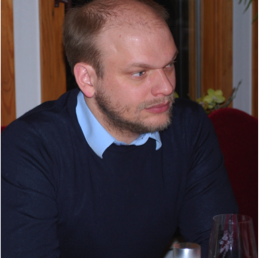 | Dr. Richard Berntsson Svensson is an assistant professor in Software Engineering at Blekinge Institute of Technology. He is also an assistant professor at Chalmers | University of Gothenburg. His research commitments ranges from conference organisation (Local Organising-Chair for REFSQ’16, Industry Chair for REFSQ’12, Industry Track Co-Chair for RE’15), workshop organisation (General-Chair for EmpiRE’15), to serving as PC member for (REFSQ/ICSOB/SEAA). Dr. Berntsson Svensson worked with several research projects in collaboration with more than 30 companies. |
Abstract:
Software is a part of most things today, either as a central part of the product, or as an embedded enabler. The PROMPT educational initiative aims to increase knowledge about how to manage and develop software intensive products by offering university grade education for active industry professionals. This is achieved by developing flexible learning courses specifically aimed for the busy professional. PROMPT offers courses in subject areas such as Requirements Engineering and Product Management, Design, Verification and Validation, Outsourcing, and Agile and Lean Product Development to mention a few. The overall goal of PROMPT is to offer a viable and pragmatic alternative for working professionals to expand and extend their knowledge in software engineering. As an engineer this seminar gives you input as to what courses could be relevant for you, as well as the unique formats of the courses. As a manager this seminar gives you knowledge about a powerful new alternative to professional education. PROMT is a collaboration between Blekinge Institute of Technology, Chalmers, the University of Gothenburg, Mälardalen University and SICS. www.promptedu.se
Christian Berger - CampusShuttle in the ReVeRe Ecosystem
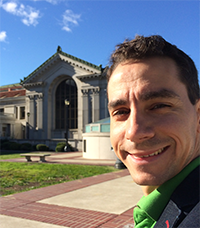 | Dr. Christian Berger is Associate Professor in the Department of Computer Science and Engineering at the University of Gothenburg, Sweden. He received his Ph.D. from RWTH Aachen University, Germany in 2010 for his work on challenges for the software engineering for self-driving vehicles together with academic and industrial partners like University of California, Berkeley in California and Volkswagen Group. His research expertise is on simulation engineering and model-based software engineering. He coordinated the interdisciplinary project for the development of the autonomously driving vehicle “Caroline”, which participated in the 2007 DARPA Urban Challenge Final in the United States. Currently, he is jointly coordinating the research initiative on self-driving vehicles at Chalmers University of Technology and University of Gothenburg in Sweden and he is member of the WASP Graduate School Management Group for Sweden’s largest research program on autonomous systems (www.wasp-sweden.se). |
Abstract:
In 2007, self-driving vehicles were demonstrated at large scale in a robot cars competition in the USA. Since then, the technology has continuously matured resulting in more and more intelligent functions in today’s cars that support the drivers as comfort and safety systems. The next step are fully autonomously driving vehicles corresponding aiming for level 5 of SAE classification. Such complex vehicle systems are designed and realized in multi-disciplinary teams with mechanical, electrical, and software engineers. This talk will outline Chalmers’ CampusShuttle project where researchers and industrial practitioners are collaborating to realize a self-driving vehicular platform as part of Chalmers Revere ecosystem involving a Volvo XC90, a Volvo FH16 Truck, scaled cars, and a virtual test environment.
Thomas Broberg - Real world data driven requirements – the key to a leading position
 | Thomas Broberg has worked with safety in various positions since 1995 at Volvo Cars. His background is within Computer Aided Engineering and Calculus and he holds a Master of Science degree in Mechanical Engineering from Chalmers University of Technology. He is currently responsible for Traffic Accident Research, Safety Requirements and Methods at Volvo Cars. Besides his day job at Volvo Cars Thomas Broberg also conduct research in the automotive safety area within SAFER at Chalmers. |
Abstract:
The car industry is highly competitive and new cars have to be developed with attributes well in balance with customer expectations and needs in order to secure a sustainable business. When it comes to safety, Volvo Cars has a long history of innovations and a leading position within the automotive industry. For decades this position has been developed using a process defining requirements based on real customer needs with the use of real world accident data. By collecting and analysing real world accident data, unique knowledge on the contributing factors causing road traffic accidents and injuries is built. Based on this knowledge, Volvo Cars defines requirements and methods for verification which in turn drives safety technology development in a pioneering spirit. The requirement are set on different levels, starting on a complete vehicle level broken down to system, functional and component level requirements. However one of the keys to success in this process is long term commitment to data collection and retrospective studies defining the actual real world performance of safety technologies launched to market. This enables predictive methods to be defined establishing the efficacy of new requirements as they are launched into product development.
Nils Kubischok - You need a sociologist in your RE-team. I'll tell you why.
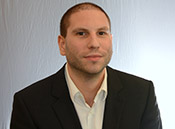 | Nils Kubischok is currently working as a Requirements Engineer with a focus on UX for adesso AG. He has a degree in Sociology and Psychology from the University of Duisburg-Essen. Before his current occupation he was a research assistant at the University of Duisburg-Essen. His research focused on Science, Technology and Innovation Studies, technology assessment and organizational sociology. In a project funded by the German Research Foundation he researched the impacts of visions, scenarios and other future concepts on the technology development process in Ubiquitous Computing and Nanomedicine. The qualitative research, with more than 70 expert interviews, was conducted in Europe, the USA and Japan. |
Abstract:
Software development is not only a technical activities, but also a genuinely social activity with a heterogeneous set of stakeholders involved. Requirements Engineering (RE) is a boundary discipline within the software development process, since it mediates between customers and end-users on the one side and corporate interests, project management and software developers on the other. As an inherently social process it does not only require classical skills from computer sciences, but also skills that are known from the social sciences. Besides being acquainted with the theoretical backgrounds of organizational and technology studies, social scientists are usually also well trained in empirical methods. While quantitative approaches are well understood in IT, it is especially the qualitative methodology that can greatly support the work of the requirements engineer. For example, well performed interviews and ethnographical studies do not only remarkably improve the elicitation process but they also foster the conversion and conviction of customers and end-users. This is particularly true since qualitative methods allow to integrate customers and end-users and therefore their attitudes, preferences and values into the development process. Further, the theoretical background of social scientists facilitates a user centered approach where also social, organizational and cultural aspects are taken into consideration. This talk will plead for more interdisciplinary teams in requirements engineering, where social scientists can yield their theoretical and methodological skills to develop better software for users and organizations.